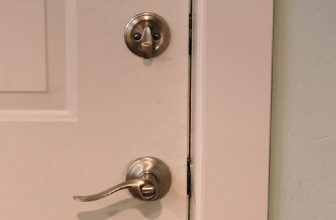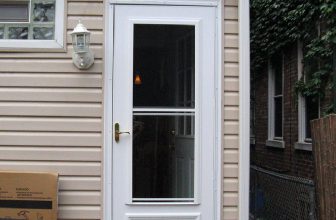How to Make a Sliding Door Slide Easy
Do you have a sliding door that seems to stick and move slowly? If so, you likely need a quick fix or repair solution. Lucky for you, this post will provide an easy-to-follow guide on how to make your sliding door smooth once again!

Nobody wants to struggle to open a sliding door, especially when there could be something blocking the way or the door itself simply refuses to budge. The good news is that it doesn’t have to stay this way – you can take some simple steps to make your sliding door easier and smoother to operate.
Whether you’re looking for long-term solutions or just need a quick fix before inviting friends over, read on for our tips on how to make a sliding door slide easy again!
What are the Benefits of Making a Sliding Door Slide Easily?
Smooth and easy-to-open sliding doors make life easier for everyone. Whether you’re simply trying to get out of your house in a hurry or are welcoming guests into your home, having an easy-to-operate sliding door is key. Taking the time to make sure that it runs smoothly and silently will also save you energy in the long run – less force needed to open and close the door means more energy saved.
In addition, having a well-maintained sliding door is more likely to be relatively safe than one that’s stuck or not properly functioning. Since broken doors can cause accidents and other problems, taking steps now to repair any issues could help avoid future mishaps.
Overall, keeping your sliding door in good condition will give you peace of mind and make life easier – making a sliding door slide easy should be at the top of your to-do list!
What Will You Need?
Before you start, it’s important to ensure you have all the necessary supplies and tools. This will save you from having to pause in the middle of your project if something is missing!
You’ll need a few basic items such as follows:
- Wood putty
- A screwdriver
- Vacuum cleaner
- White lithium grease or silicone lubricant
- Rubbing alcohol and rags
- Furniture polish (optional)
- Sandpaper (optional)
Now that you have all the necessary supplies, it’s time to get started on making a sliding door slide easy again! Here are the steps.
10 Easy Steps on How to Make a Sliding Door Slide Easy
Step 1. Check for Obstructions
The first step is to look around the track of your sliding door to see if there are any objects or debris blocking its path. If so, clear them away before continuing. You can use a vacuum cleaner to make sure that the track is free of dirt and dust.
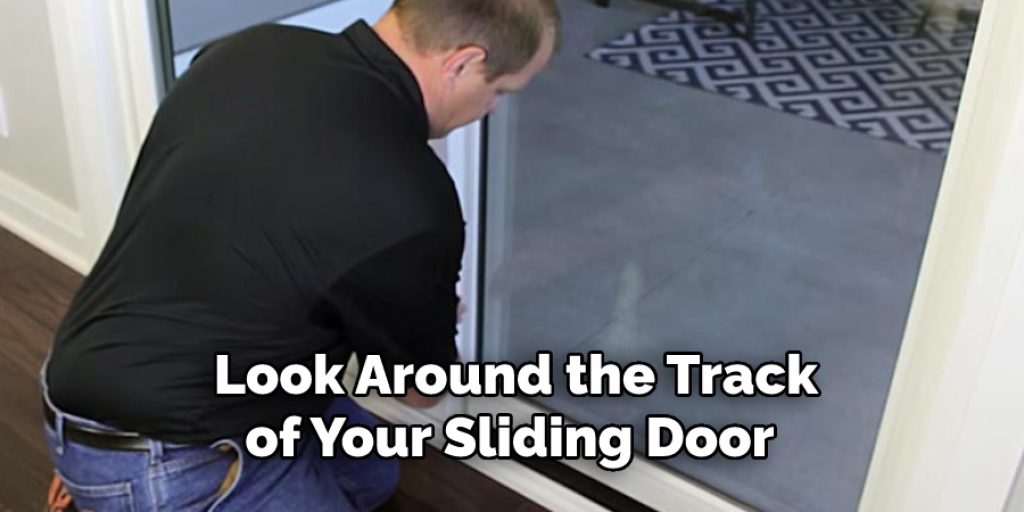
Step 2. Lubricate
Once you’ve cleared away any obstructions, the next step is to lubricate your door’s track. This will help it move more smoothly and reduce how often you need to repair it. You can use a white lithium grease or silicone lubricant for this purpose.
Step 3. Tighten Screws
If you notice that some of the screws are loose or have come out completely, you should tighten them up with a screwdriver to ensure your sliding door is secure and steady. Be careful not to over-tighten the screws, as this could damage the track. Because of this, it’s always a good idea to use a torque wrench when possible.
Step 4. Clean Track
Using a rag soaked in rubbing alcohol, wipe down the track and all other parts of the door, including knobs, locks, and hinges, where necessary. This helps remove any dirt and residue that may prevent the door from sliding easily. Additionally, you can use furniture polish to give the door a glossy finish if desired.
Step 5. Fill Gaps
If you notice any gaps in the track of your sliding door, fill them with wood putty or caulk to ensure a smooth operation. Try to make the surface as flat and even as possible. Don’t worry if the putty and caulk don’t perfectly match the rest of the track – it can be easily painted over in a color that matches.
Step 6. Sand Down Parts (optional)
Using sandpaper, lightly sand down any parts of the door where needed, such as knobs and locks, to make sure they move smoothly. If you’re unsure how to proceed, it’s best to consult a professional for advice. They will be able to provide you with the best advice for how to make a sliding door slide easy again.
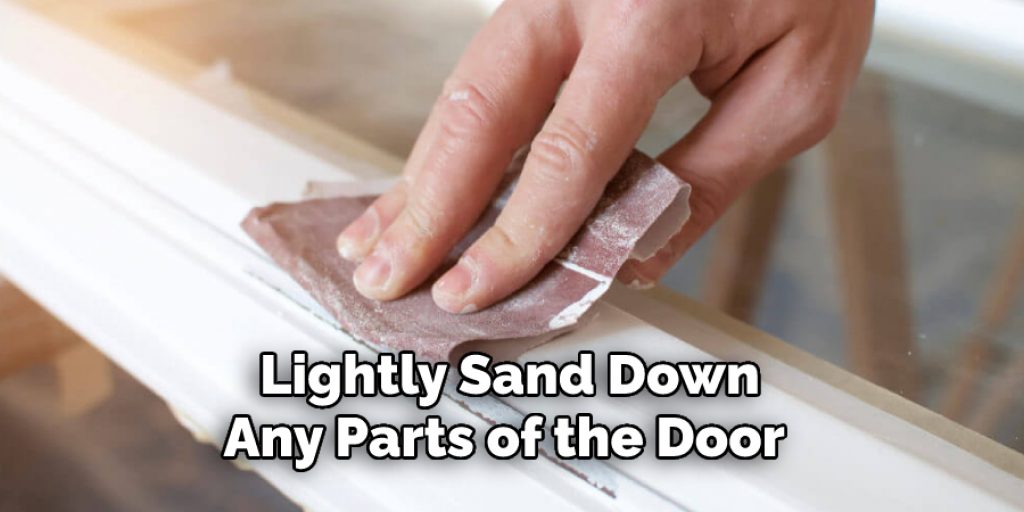
Step 7. Apply Furniture Polish (optional)
Consider applying some furniture polish on top to protect all metal parts of your sliding door and prevent rusting. This will help extend how long it stays looking shiny and new! If needed, you can also wax the door for extra protection.
Step 8. Test Out
Once you’ve completed all the steps, it’s time to test out how smoothly your sliding door is now operating. Open and close it several times to make sure that everything is working properly. It should open and close without any jerks or sticking.
Step 9. Enjoy
You should now be able to enjoy how easily your sliding door slides! No more struggling or repairing – just a nice smooth operation every time. Remember to re-lubricate the track and tighten any screws every few months to ensure that your sliding door won’t get stuck again.
Step 10. Maintain
Finally, to make sure that your sliding door continues to work well for years to come, remember to clean and lubricate it every few months. This will help reduce how often it needs repairs and keep its look as good as new! Moreover, checking for obstructions on the track regularly is always a good idea.
Following these simple steps can help you make a sliding door slide easy again in no time. With just a bit of time, effort, and the right supplies, your sliding door will look and function better than ever!
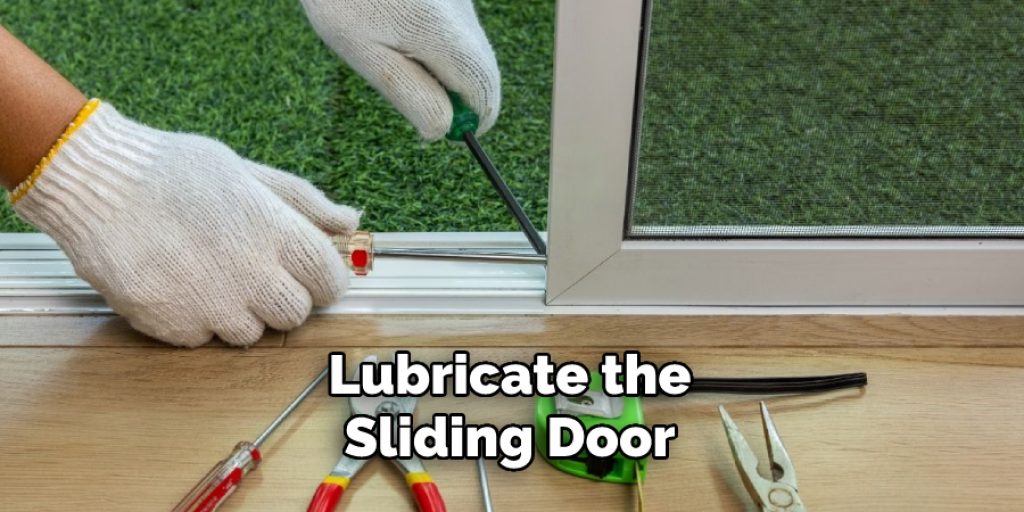
5 Additional Tips and Tricks
- Check the track for any obstructions. This simple and often overlooked step can cause sticking or jamming in your sliding door. Inspect your door’s track periodically and brush away any dirt, dust, or other debris that can accumulate over time.
- Lubricate the tracks with silicone spray or furniture wax. This will help to reduce friction on the rails and make sliding easier. It’s also important to note that some lubricants may be harmful to certain materials so it’s wise to do a patch test first on an inconspicuous area before applying them liberally.
- Make sure the rollers are in good condition and properly aligned. Over time, rollers can come loose from the door, become misaligned or simply wear out from use. Check your rollers regularly and adjust if needed.
- If possible, raise the bottom of the door slightly to help reduce drag on the track. This can be done by adding shims or wedges between the frame and track or replacing worn-out rollers with adjustable ones that allow height adjustment.
- Lastly, consider installing a pocket door guide at the bottom of the sliding door to help keep it in place and avoid rattling while in use. Pocket door guides are easy to install and great additions to any sliding system!
With these tips and tricks, you’ll be on your way to having a sliding door that slides easily! Good luck and happy sliding.
Why is Your Sliding Door So Hard to Open?
Does your sliding door seem to be stuck or sluggish when you try to open it? It may not be the door itself, but how the frame is installed and how much maintenance it receives could make all the difference. Here are some common reasons why your sliding door may become hard to open and how you can make it slide easier.
1. Poorly Installed Door Frame: If your door frame is not correctly aligned or leveled, then one side can bind against the wall or floor when opened, making it difficult to slide back and forth. To fix this issue, check that there are no obstacles blocking its path and adjust the position of the frame if needed by tapping a framing hammer against it until its level.

2. Buildup of Dirt and Grime: Another cause of a sliding door becoming hard to open is the buildup of dirt and grime in its track and wheels. This can create friction, preventing it from being able to slide smoothly across the track. To ensure that your door remains operational, regularly clean it with a damp cloth or brush, paying close attention to the track and wheels.
3. Unlubricated Parts: If your sliding door has not been lubricated in a while, then you may find that it does not move as easily as it should. Metal parts can rust together without sufficient lubrication, making them difficult to move and adding extra resistance when opening the door. To fix this issue, apply a generous amount of lubricant such as WD-40 or silicone spray, to the track and wheels.
By following these simple steps, you can make sure that your door moves smoothly and freely without any trouble. So, next time your sliding door refuses to open, look at how it’s installed and how much maintenance it receives before calling a professional for help!
What is the Best Lubricant for Sliding Doors?
When it comes to lubricants for sliding doors, there is no “one size fits all” solution. Different materials require different treatments and products to ensure the door slides smoothly and properly function. Here are some of the best lubricants for sliding doors:
1. Wax or Furniture Polish: Wax and furniture polish can help reduce friction between metal surfaces while keeping rust at bay. To use this product, lightly apply a small amount of wax or furniture polish to the tracks and wheels using a clean cloth. Allow it to settle in before wiping away any excess with a dry cloth afterward.
2. Silicone Spray Lubricant: Due to its high viscosity and long-lasting lubricating capabilities, silicone spray lubricant is great for use on sliding doors. Simply apply the product directly onto the tracks and wheels using a light mist and let it settle in before wiping away any excess.
3. Petroleum Jelly: Also known as “Vaseline,” petroleum jelly is an excellent lubricant for sliding door tracks and wheels. Apply a thin layer of petroleum jelly to the track with a clean cloth, then spread it evenly across the surface. It should be reapplied every few months or so for best results, depending on how much wear and tear your doors experience.

Remember that different materials require different types of lubricants, so read labels carefully before applying any products!
Conclusion
Sliding doors are an effective solution to save space and bring a unique style to your home. With these considerate steps, you should now have an easy-to-slide door that operates smoothly and with minimal effort. It is well worth taking a few moments to address potential sticking points in order to keep your sliding door in top condition for a long time.
Regular maintenance will go a long way towards ensuring the smooth operation of your sliding door, but don’t forget to take it slow when closing or opening it—this simple precaution will save you from future hassles down the line.
Hopefully, the article on how to make a sliding door slide easy was insightful and gave you an idea of how to keep your door in top condition. With the right tips, you can ensure that your sliding door remains easy to open for years. Good luck, and happy sliding! 🙂


